Serengeti National Park
Serengeti National Park
World-class wildlife viewing all year round
From elephants and lions, hyenas and warthogs, crocodiles and zebras – the Serengeti National Park will enchant you with its diverse wildlife on the seemingly endless savannahs. The Serengeti is not only one of the oldest parks in Tanzania, but also a UNESCO World Heritage Site. It has become world famous as the backdrop for the Greatest Show on Earth – the Great Wildebeest Migration. But all year round you can encounter impressive wildlife, stay in camps in beautiful locations and experience classic safari adventures.
One of the oldest national parks in Tanzania
When you think of safari, you probably think of Serengeti National Park. And rightly so, because it is one of the most spectacular national parks in the world.
The Serengeti National Park is located in northwest Tanzania. The park and adjacent reserves provide one of the last remaining animal migrations on the planet. This animalistic natural spectacle, the large number of animals in the park and its breathtaking, diverse landscapes are just a few reasons why the park was declared a UNESCO World Heritage Site in 1981.
Serengeti National Park offers exceptional wildlife viewing all year round, where you can experience the great wildebeest migration and the Big Five.
The four regions of Serengeti National Park
A little insight into what awaits you.
Central Serengeti
The Seronera Valley is the heart of the park and home to many wildlife. Watch lions and cheetahs lounging on the plains in the shade of acacia trees. The Seronera River is surrounded by palm trees, liver sausage trees and yellow bark acacias. The river attracts numerous birds and animals, including many leopards. At the Retima Hippo Pool you can observe the vegetarian giants in their natural environment.
Southern Serengeti
On the southern plains you will discover endless grasslands and huge granite rocks called kopjes, which serve as shelter for the entire food chain. Kopjes provide shady resting places, viewing points and nurseries for lions, leopards, cheetahs and hyenas, to name just a few animals. Other interesting species to look for include rock hyraxes and colorful settler dragons. All Kopjes have names, the best known are Simba, Gol, Research and Moru. January to February is the calving season for wildebeest around Lake Ndutu. Many predators can be observed during this time.
Western Serengeti
The western Serengeti extends almost to Lake Victoria. Here the vegetation transitions into wooded savannas and black clay soils, which are impassable during the rainy season. The Grumeti Game Reserve and the Ikorongo Game Reserve border the park; Two large rivers flow there: the Grumeti and the Mbalageti River, both of which flow into Lake Victoria. The Grumeti River is famous for river crossings during the Great Migration, huge crocodiles and the rare hussar monkeys. From mid-May the wildebeest and zebras arrive in this area and the time of river crossings on the Grumeti River begins.
Northern Serengeti
The northern Serengeti consists of open forests, floodplains and hilly landscapes. Here is the majestic Mara River, known for its five-meter-long crocodiles and the legendary wildebeest river crossings, which are most spectacular from mid-July. This area is visited by significantly fewer travelers, making it a great place for a personal safari experience.
Animals and birds in Serengeti National Park
The park is home to the Big Five – lion, elephant, buffalo, leopard and rhinoceros. However, spotting the black rhinoceros is very difficult. The Serengeti is home to a sizeable population of lions, leopards and cheetahs. In addition, buffalo and an increasing number of elephants graze on the extensive savannahs.
Around 530 species of birds can be found in Serengeti National Park, including the secretary bird, Egyptian geese, black-necked herons, grey-necked crowned cranes, giant bustards and the largest population of ostriches in Tanzania.
The Great Wildebeest Migration
Witnessing around 1.5 million wildebeest in one place is breathtaking. These many herbivores attract numerous predators. The drama that unfolds on the plains, and especially the river crossings, is fascinating.
The wildebeest migration in a nutshell: To experience the wildebeest migration, you should visit the Serengeti National Park between June and October. July is the best time to see the Mara River crossing. But be prepared that it can get crowded in the park and at the crossings. For a more personalized safari experience, we recommend visiting in the off-season or exploring more remote areas of the park. The wildebeest’s calving season is from January to February and their mating season is from May to June. Mid-May is the best time to experience the Grumeti River crossing. Find out more about a Great Migration Safari.

Best time to travel
You can visit Serengeti National Park all year round. The period from June to October is the dry season and also the time of the wildebeest migration. During these months it is easier to spot animals and the weather is pleasant. However, it is a popular time to visit, so parts of the park can get quite crowded. The short rains in November to December bring the greenery, followed by a short dry period in January and February. There are long rains from March to May. This is the ideal time if you want to experience the Serengeti in lush greenery and with fewer visitors.
Safaris in every season
Experience a classic safari in the Serengeti with mesmerizing sunsets, abundant wildlife, adventurous game drives and a variety of lodges and camps. The Serengeti is exceptionally beautiful. Its vast plains, dotted with rocky “kopjes” islands, will make you feel tiny in the middle of nature. The riparian forests, beautiful tree-lined transitions between the rivers and the plains, are true hotspots for biodiversity. Exceptionally high animal populations, including approximately 530 species of birds, provide world-class wildlife viewing all year round. The Serengeti is best known for the Great Migration.
If you visit the Serengeti in low or mid-season, you may not experience a river crossing. But there is also less going on. Therefore, for a more personalized experience, we recommend traveling outside of peak season. Since the Serengeti is probably the most popular park in Tanzania, you can choose from many different camps and lodges.
Location
The seven-hour drive from Arusha to Serengeti National Park is part of the Northern Circuit. You can make several stops along the way, for example in Lake Manyara National Park and the Ngorongoro Crater. The drive between the parks is just beautiful. You will see the Rift Valley and experience northern Tanzania in all its glory. Since there are regular flights from Arusha, many travelers drive one way and then fly back. The center of the park is in the Seronera Valley, where the Serengeti Research Center is located – known for its long-standing research activities. Stunning accommodations are available in all areas of the p

Photos from Serengeti National Park
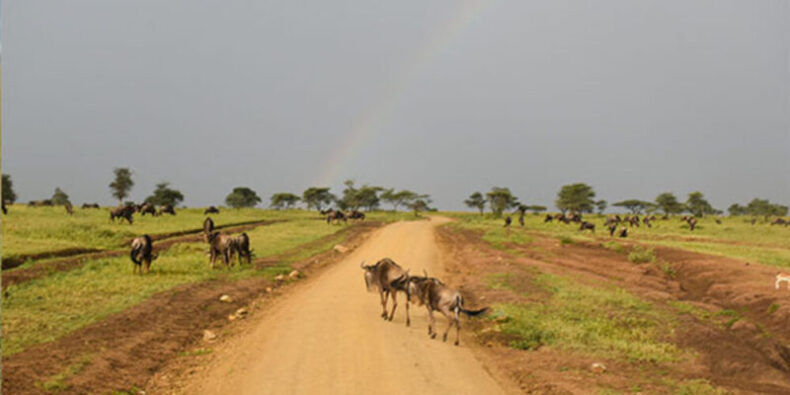

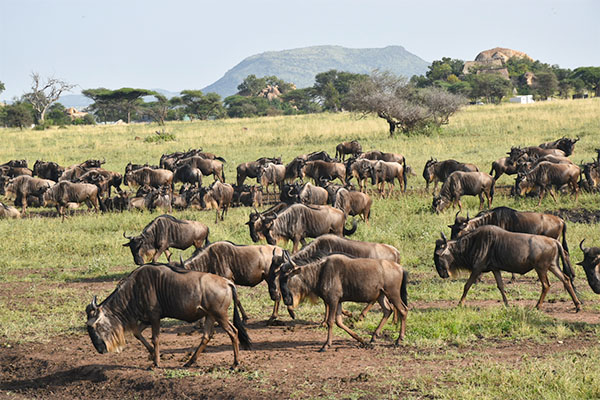
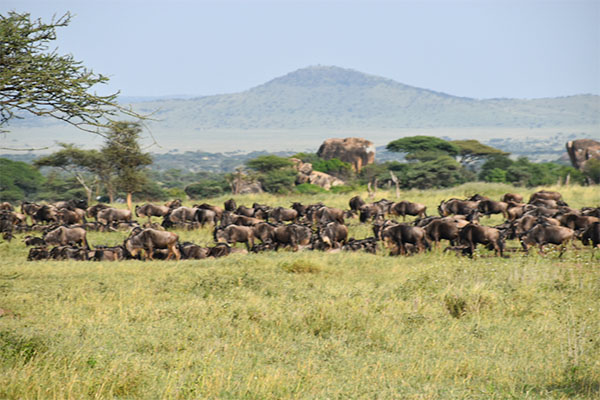
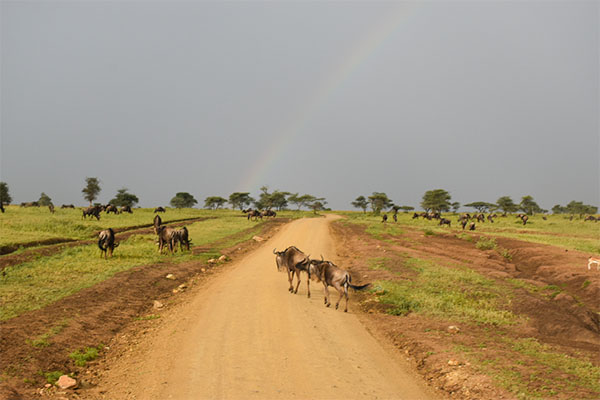

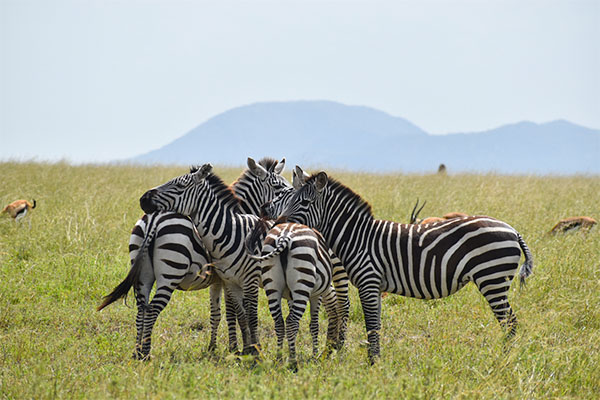

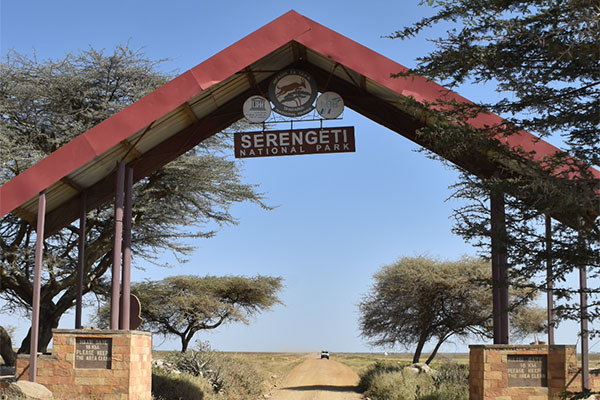
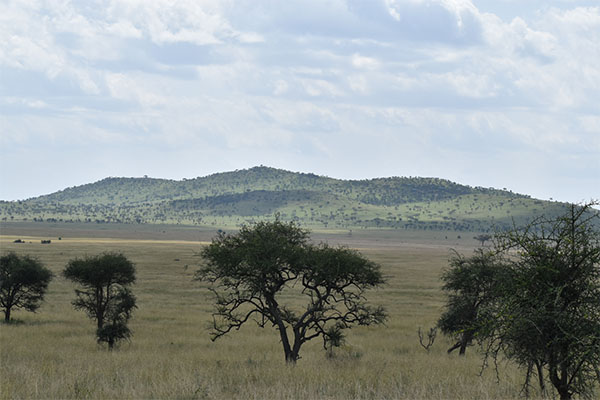
Video from Serengeti National Park
INQUIRE SERENGETI NATIONAL PARK TOUR
Start planning your Serengeti National Park tour by filling the form below
